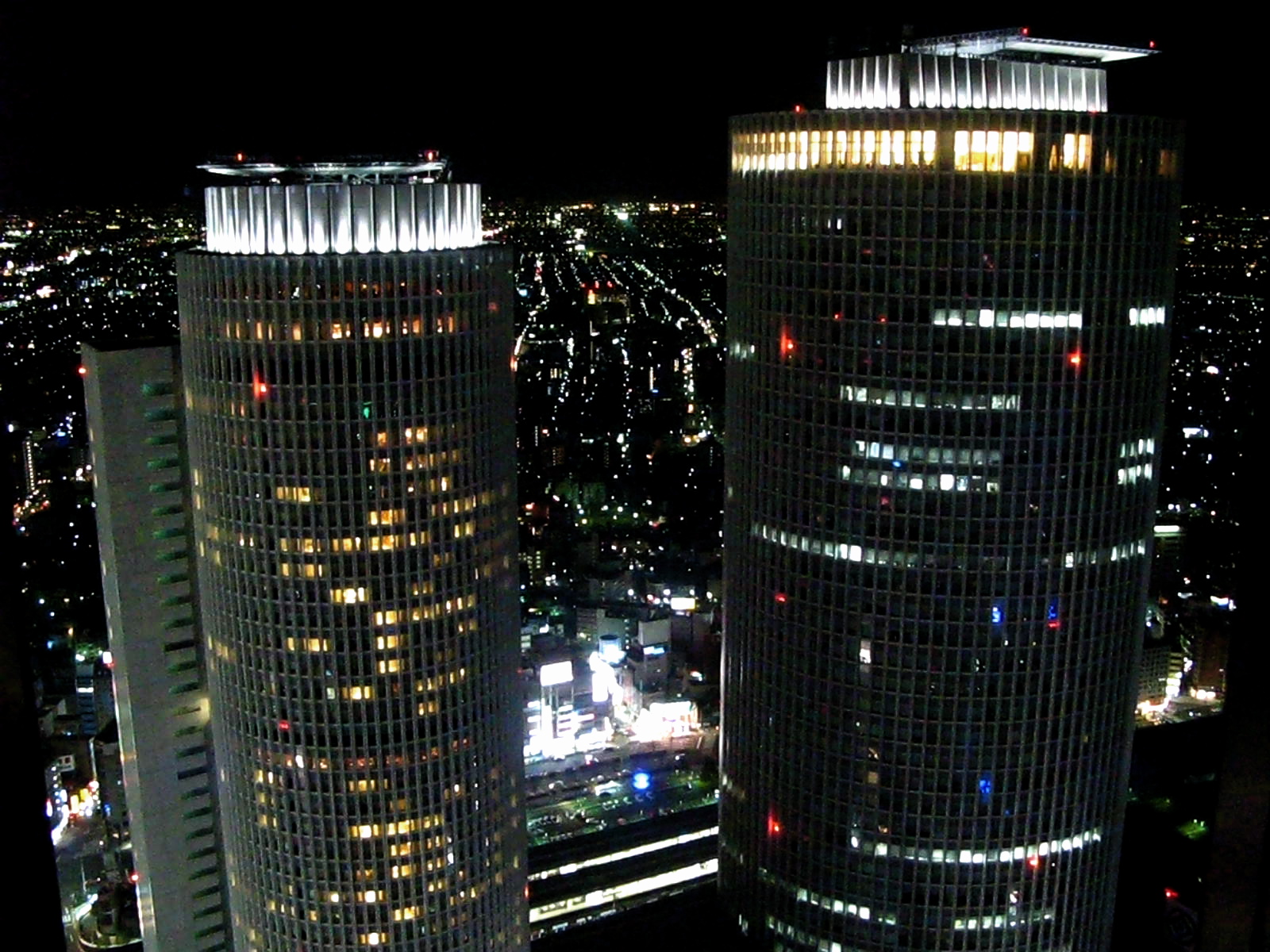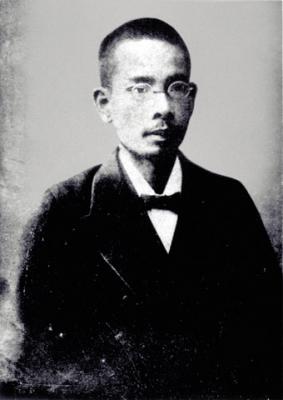|
Ryūkyū Shimpō
The was the first Okinawan newspaper."Ryūkyū Shimpō." ''Okinawa konpakuto jiten'' (沖縄コンパクト事典, "Okinawa Compact Encyclopedia")Ryukyu Shimpo(琉球新報). 1 March 2003. Accessed 6 September 2009. It was founded in 1893 by Shō Jun, a former prince of the Ryūkyū Kingdom, and is still in publication today. Historian George H. Kerr says of the newspaper, upon its founding, that it "strengthened leadership and promoted the development of informed opinion on matters of public concern". It has also been described as speaking for the former ruling class of the kingdom. Editor-in-chief Ōta Chōfu, along with others from the newspaper, played a role in the Kōdō-kai Movement, arguing for leadership of the prefecture to remain hereditary within the Shō family, and opposing the Freedom and People's Rights Movement led in Okinawa by, among others, Jahana Noboru was an official in the government of Japan's Okinawa Prefecture, and an Okinawan rights activist, i ... [...More Info...] [...Related Items...] OR: [Wikipedia] [Google] [Baidu] |
Newspaper
A newspaper is a periodical publication containing written information about current events and is often typed in black ink with a white or gray background. Newspapers can cover a wide variety of fields such as politics, business, sports and art, and often include materials such as opinion columns, weather forecasts, reviews of local services, obituaries, birth notices, crosswords, editorial cartoons, comic strips, and advice columns. Most newspapers are businesses, and they pay their expenses with a mixture of subscription revenue, newsstand sales, and advertising revenue. The journalism organizations that publish newspapers are themselves often metonymically called newspapers. Newspapers have traditionally been published in print (usually on cheap, low-grade paper called newsprint). However, today most newspapers are also published on websites as online newspapers, and some have even abandoned their print versions entirely. Newspapers developed in the 1 ... [...More Info...] [...Related Items...] OR: [Wikipedia] [Google] [Baidu] |
Broadsheet
A broadsheet is the largest newspaper format and is characterized by long Vertical and horizontal, vertical pages, typically of . Other common newspaper formats include the smaller Berliner (format), Berliner and Tabloid (newspaper format), tabloid–Compact (newspaper), compact formats. Description Many broadsheets measure roughly per full broadsheet spread, twice the size of a standard tabloid. Australians, Australian and New Zealand broadsheets always have a paper size of ISO 216, A1 per spread (). South Africa, South African broadsheet newspapers have a double-page spread sheet size of (single-page live print area of 380 x 545 mm). Others measure 22 in (560 mm) vertically. In the United States, the traditional dimensions for the front page half of a broadsheet are wide by long. However, in efforts to save newsprint costs, many U.S. newspapers have downsized to wide by long for a folded page. Many rate cards and specification cards refer to the "broadsheet size ... [...More Info...] [...Related Items...] OR: [Wikipedia] [Google] [Baidu] |
Ryukyu Shimpo Newspaper Building
The , also known as the or the , are a chain of Japanese islands that stretch southwest from Kyushu to Taiwan: the Ōsumi, Tokara, Amami, Okinawa, and Sakishima Islands (further divided into the Miyako and Yaeyama Islands), with Yonaguni the westernmost. The larger are mostly high islands and the smaller mostly coral. The largest is Okinawa Island. The climate of the islands ranges from humid subtropical climate (Köppen climate classification ''Cfa'') in the north to tropical rainforest climate (Köppen climate classification ''Af'') in the south. Precipitation is very high and is affected by the rainy season and typhoons. Except the outlying Daitō Islands, the island chain has two major geologic boundaries, the Tokara Strait (between the Tokara and Amami Islands) and the Kerama Gap (between the Okinawa and Miyako Islands). The islands beyond the Tokara Strait are characterized by their coral reefs. The Ōsumi and Tokara Islands, the northernmost of the islands, fall u ... [...More Info...] [...Related Items...] OR: [Wikipedia] [Google] [Baidu] |
Okinawa Prefecture
is a prefecture of Japan. Okinawa Prefecture is the southernmost and westernmost prefecture of Japan, has a population of 1,457,162 (as of 2 February 2020) and a geographic area of 2,281 km2 (880 sq mi). Naha is the capital and largest city of Okinawa Prefecture, with other major cities including Okinawa, Uruma, and Urasoe. Okinawa Prefecture encompasses two thirds of the Ryukyu Islands, including the Okinawa, Daitō and Sakishima groups, extending southwest from the Satsunan Islands of Kagoshima Prefecture to Taiwan ( Hualien and Yilan Counties). Okinawa Prefecture's largest island, Okinawa Island, is the home to a majority of Okinawa's population. Okinawa Prefecture's indigenous ethnic group are the Ryukyuan people, who also live in the Amami Islands of Kagoshima Prefecture. Okinawa Prefecture was ruled by the Ryukyu Kingdom from 1429 and unofficially annexed by Japan after the Invasion of Ryukyu in 1609. Okinawa Prefecture was officially founded in 1879 by ... [...More Info...] [...Related Items...] OR: [Wikipedia] [Google] [Baidu] |
Shō Jun (1873-1945)
Shō Jun may refer to: * Shō Jun (1660-1706) (尚 純), son of King Shō Tei of the Ryūkyū Kingdom * Shō Jun (1873-1945) (尚 順), son of King Shō Tai of the Ryūkyū Kingdom {{hndis, Sho Jun ... [...More Info...] [...Related Items...] OR: [Wikipedia] [Google] [Baidu] |
Ryūkyū Kingdom
The Ryukyu Kingdom, Middle Chinese: , , Classical Chinese: (), Historical English names: ''Lew Chew'', ''Lewchew'', ''Luchu'', and ''Loochoo'', Historical French name: ''Liou-tchou'', Historical Dutch name: ''Lioe-kioe'' was a kingdom in the Ryukyu Islands from 1429 to 1879. It was ruled as a tributary state of imperial Ming China by the Ryukyuan monarchy, who unified Okinawa Island to end the Sanzan period, and extended the kingdom to the Amami Islands and Sakishima Islands. The Ryukyu Kingdom played a central role in the maritime trade networks of medieval East Asia and Southeast Asia despite its small size. The Ryukyu Kingdom became a vassal state of the Satsuma Domain of Japan after the invasion of Ryukyu in 1609 but retained ''de jure'' independence until it was transformed into the Ryukyu Domain by the Empire of Japan in 1872. The Ryukyu Kingdom was formally annexed and dissolved by Japan in 1879 to form Okinawa Prefecture, and the Ryukyuan monarchy was integrated in ... [...More Info...] [...Related Items...] OR: [Wikipedia] [Google] [Baidu] |
George H
George may refer to: People * George (given name) * George (surname) * George (singer), American-Canadian singer George Nozuka, known by the mononym George * George Washington, First President of the United States * George W. Bush, 43rd President of the United States * George H. W. Bush, 41st President of the United States * George V, King of Great Britain, Ireland, the British Dominions and Emperor of India from 1910-1936 * George VI, King of Great Britain, Ireland, the British Dominions and Emperor of India from 1936-1952 * Prince George of Wales * George Papagheorghe also known as Jorge / GEØRGE * George, stage name of Giorgio Moroder * George Harrison, an English musician and singer-songwriter Places South Africa * George, Western Cape ** George Airport United States * George, Iowa * George, Missouri * George, Washington * George County, Mississippi * George Air Force Base, a former U.S. Air Force base located in California Characters * George (Peppa Pig), a 2- ... [...More Info...] [...Related Items...] OR: [Wikipedia] [Google] [Baidu] |
Ōta Chōfu
was a prominent Ryukyuan journalist of the late 19th and early 20th centuries, famous for his involvement in the Kōdō-kai Movement, advocating the maintenance of hereditary rule of Okinawa under the heirs to the royal family of Ryūkyū. Life and career Ōta was born in Shuri, and in 1882 became one of the first Okinawan students in the Meiji period to be awarded a scholarship to study in Tokyo."Ōta Chōfu." ''Okinawa rekishi jinmei jiten'' (沖縄歴史人名事典, "Encyclopedia of People in Okinawan History"). Naha: Okinawa Bunka-sha, 2002. p15. After studying at Gakushūin and Keiō Universities, he returned to Okinawa in 1893, and helped found the Ryūkyū Shimpō, the first newspaper in Okinawa."Ōta Chōfu". ''Okinawa konpakuto jiten'' (沖縄コンパクト事典, "Okinawa Compact Encyclopedia")Ryukyu Shimpo Publishing 1 March 2003. Accessed 11 September 2009. Following the abolition of the Ryūkyū Kingdom and annexation of the islands by Japan as Okinawa Prefec ... [...More Info...] [...Related Items...] OR: [Wikipedia] [Google] [Baidu] |
Kōdō-kai Movement
The Kodo-kai ( ''Kōdō-kai'', ''Koh-doh-kai'') is a yakuza criminal organization based in Nagoya, Japan. It is a secondary organization of the Sixth Yamaguchi-gumi, the largest known yakuza syndicate in Japan. With an estimated membership of 4,000,"Yakuza chief arrested in Japan" November 18, 2010, '''' it is the second-largest Yamaguchi affiliate after the , and operates in at least 18 |
Freedom And People's Rights Movement
The (abbreviated as ) or Popular Rights Movement was a Japanese political and social movement for democracy in the 1880s. It pursued the formation of an elected legislature, revision of the Unequal Treaties with the United States and European countries, the institution of civil rights, and the reduction of centralized taxation. The Movement prompted the Meiji government to establish a constitution in 1889 and a diet in 1890; on the other hand, it failed to loosen the control of the central government and its demand for true democracy remained unfulfilled, with ultimate power continuing to reside in the Meiji (Chōshū–Satsuma) oligarchy because, among other limitations, under the Meiji Constitution, the first election law enfranchised only men who paid a substantial amount in property taxes, as a result of the Land Tax Reform in 1873. Related people * Chiba Takusaburō, author of the " Itsukaichi constitution" (五日市憲法), a draft constitution for the Empire of Japan ... [...More Info...] [...Related Items...] OR: [Wikipedia] [Google] [Baidu] |
Jahana Noboru
was an official in the government of Japan's Okinawa Prefecture, and an Okinawan rights activist, in connection with the . Life and career Jahana Noboru was born in 1865 into a farming family in Kochinda, Okinawa, Kochinda ''magiri''"Jahana Noboru." ''Okinawa rekishi jinmei jiten'' (沖縄歴史人名事典, "Encyclopedia of People of Okinawan History"). Naha: Okinawa Bunka-sha, 1996. p37. on Okinawa, then part of the Ryukyu Kingdom. In 1882, he traveled to Tokyo to study, one of fiveKerr, George H. ''Okinawa: The History of an Island People''. (revised ed.) Tokyo: Tuttle Publishing, 2003. p414n. to be the first to be funded by Okinawa Prefecture to do so,"Jahana Noboru." ''Okinawa konpakuto jiten'' (沖縄コンパクト事典, "Okinawa Compact Encyclopedia")Ryukyu Shimpo(琉球新報). 1 March 2003. Accessed 19 September 2008. attending Gakushūin and Tokyo University. The first Okinawan university graduate, he was hired into the prefectural government as an engineer of agricu ... [...More Info...] [...Related Items...] OR: [Wikipedia] [Google] [Baidu] |
World War II
World War II or the Second World War, often abbreviated as WWII or WW2, was a world war that lasted from 1939 to 1945. It involved the World War II by country, vast majority of the world's countries—including all of the great powers—forming two opposing military alliances: the Allies of World War II, Allies and the Axis powers. World War II was a total war that directly involved more than 100 million Military personnel, personnel from more than 30 countries. The major participants in the war threw their entire economic, industrial, and scientific capabilities behind the war effort, blurring the distinction between civilian and military resources. Air warfare of World War II, Aircraft played a major role in the conflict, enabling the strategic bombing of population centres and deploying the Atomic bombings of Hiroshima and Nagasaki, only two nuclear weapons ever used in war. World War II was by far the List of wars by death toll, deadliest conflict in hu ... [...More Info...] [...Related Items...] OR: [Wikipedia] [Google] [Baidu] |







